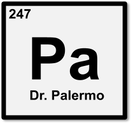PHENOMENON: Tank Car Crush or Pistol Shrimp
Documents |
Lab Videos
|
Concept Videos
|
|
|
Regents Core Curriculum
- The concept of an ideal gas is a model to explain the behavior of gases. A real gas is most like an ideal gas when the real gas is at low pressure and high temperature. (3.4a)
- Kinetic molecular theory (KMT) for an ideal gas states that all gas particles : 1.are in random, constant, straight-line motion. 2.are separated by great distances relative to their size; the volume of the gas particles is considered negligible. 3.have no attractive forces between them. 4.have collisions that may result in the transfer of energy between gas particles, but the total energy of the system remains constant. (3.4b)
- Collision theory states that a reaction is most likely to occur if reactant particles collide with the proper energy and orientation. (3.4d)
- Kinetic molecular theory describes the relationships of pressure, volume, temperature, velocity, and frequency and force of collisions among gas molecules. (3.4c)
- Equal volumes of different gases at the same temperature and pressure contain an equal number of particles. (3.4e)






